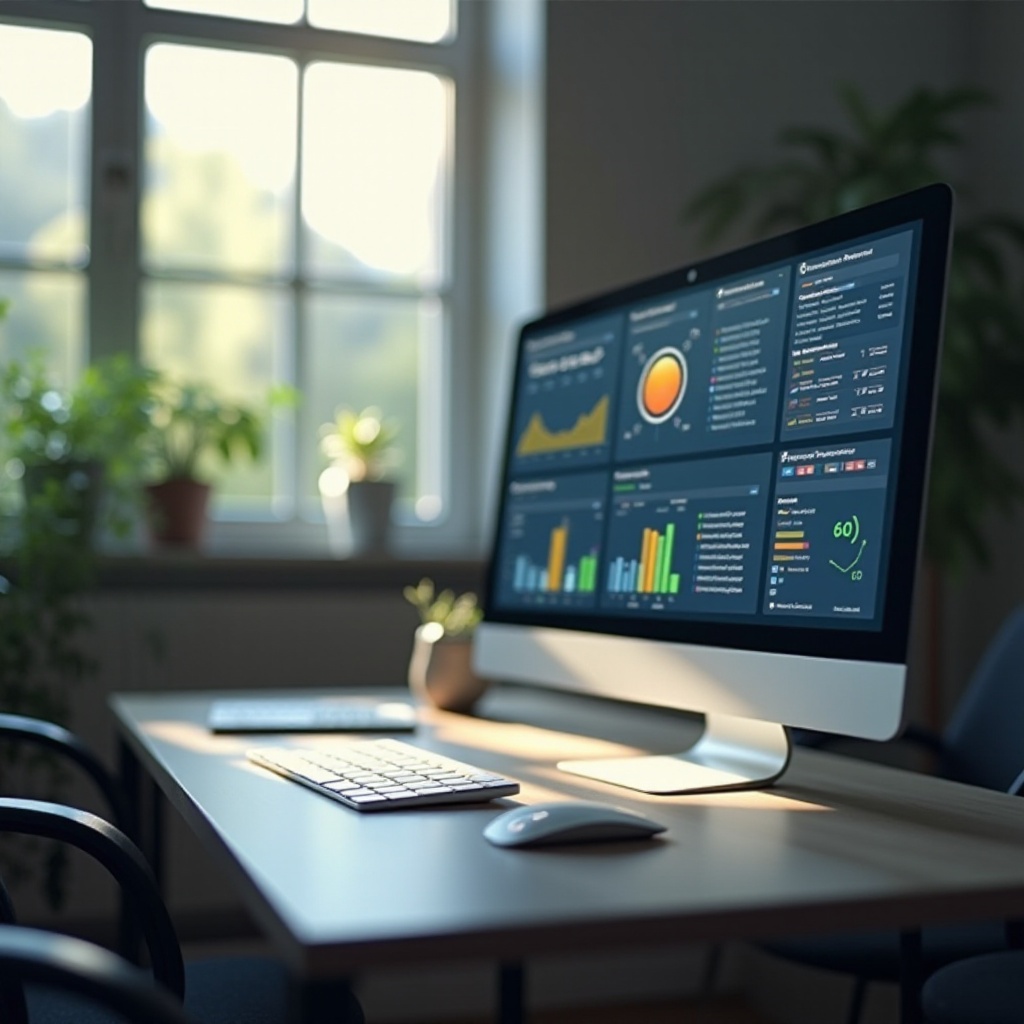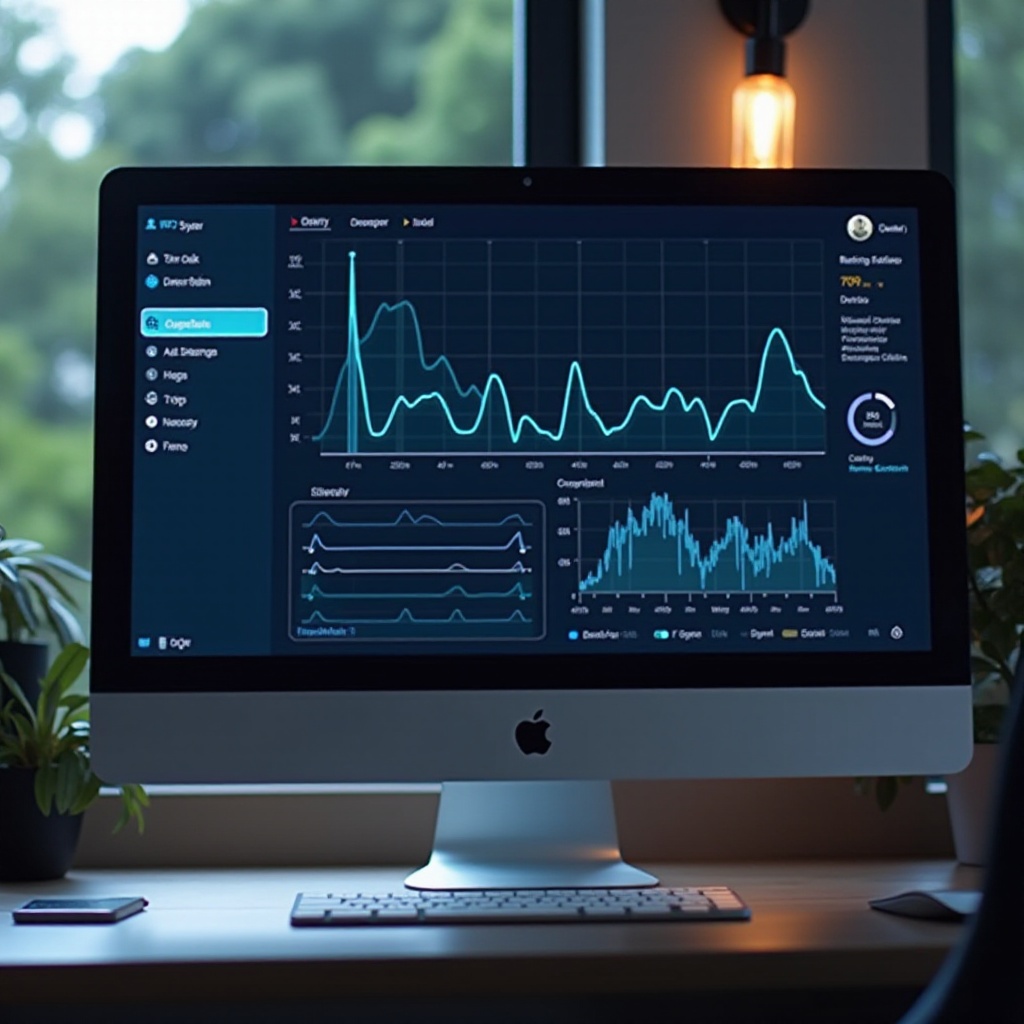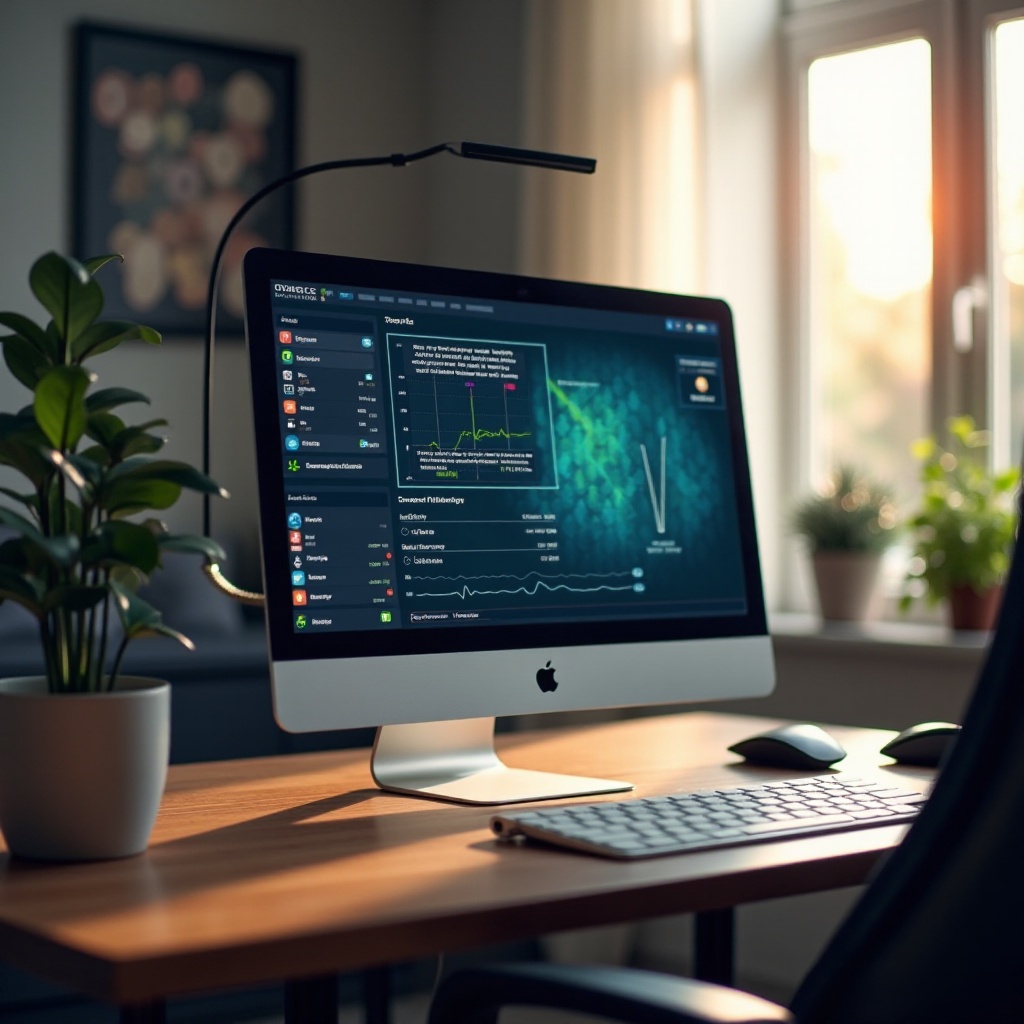
Introduction
Knowing how much power your PC is using is crucial for both economic and environmental reasons. By understanding your computer’s power consumption, you can make informed decisions about how to reduce electricity use, upgrade hardware, or change configurations. From built-in tools to third-party software, multiple methods are available to help you monitor your system’s energy usage. Whether you’re using a Windows or Mac machine, this guide will walk you through various options to ensure you’re well-informed.

Why Monitor Your PC’s Power Usage?
Tracking power consumption is vital for anyone who wants to minimize energy bills and reduce their carbon footprint. By observing energy usage patterns, you can pinpoint processes that consume the most power and adopt strategies to optimize their efficiency. This insight is particularly beneficial for those using desktop setups, where knowing power requirements can help in selecting an appropriate Uninterruptible Power Supply (UPS). Whether your PC is used for intensive tasks like gaming or simply for daily browsing, being aware of energy consumption allows you to make smarter choices regarding your hardware and software.

Built-in Tools for Power Monitoring
Operating systems often have built-in tools to help you get a preliminary understanding of power usage without extra downloads.
Using Windows Task Manager
Windows users can access basic power consumption information through the Task Manager. Press Ctrl + Shift + Esc to open it and navigate to the ‘Performance’ tab. This section mainly focuses on CPU and RAM usage, but some versions offer a ‘Power Usage’ column in the ‘Processes’ tab, helping to identify power-draining applications. While it’s not a direct measure of power usage, it can give insights into resource allocation.
Using MacOS Activity Monitor
For MacOS users, the Activity Monitor provides a glimpse of power consumption. Located in ‘Utilities’ or accessible via Spotlight search, the application includes an ‘Energy’ tab. This feature lets you see which apps consume the most power, guiding effective management of battery life especially for MacBook owners. For more thorough power consumption data, third-party software provides further insights.
Moving between operating systems is easier with complementary options like third-party software that delve deeper into resource use.
Third-Party Software Solutions
For a more comprehensive analysis of your PC’s power consumption, third-party software solutions are invaluable.
Introduction to HWMonitor
HWMonitor stands out as a popular choice for real-time system monitoring, providing details on voltages, temperatures, and power consumption in a user-friendly format. After downloading from the official website, install and open the software to explore its extensive data. HWMonitor offers real-time insights into the power consumption of critical components like your CPU, GPU, and even peripherals.
Setting Up Open Hardware Monitor
Open Hardware Monitor serves as another excellent tool, particularly if you prefer open-source software. Similar to HWMonitor, it tracks temperatures, fan speeds, and power usage. Setting it up is simple: download the software, extract its files, and run the application. You’ll discover detailed component-level power usage information, ideal for identifying the most energy-demanding parts of your setup.
Though software solutions provide substantial data, hardware devices may offer more precise measurements.
Using Hardware Solutions for Accurate Monitoring
For those seeking the most accurate data on power consumption, hardware-based tools are the best bet.
How to Use a Power Meter
A power meter, which plugs into your wall socket, measures how much electricity your PC consumes directly. Plug the power meter into the socket, then connect your PC’s power cord to it. This device shows real-time power usage in watts, offering an exact measurement of your computer’s electricity flow.
Smart Plugs for Monitoring
Alternatively, smart plugs provide both power monitoring and added functionality via mobile apps. Inserted between your PC’s power cable and the wall socket, they measure power consumption while enabling remote control features like switching the PC on or off and setting schedules.
Using both software and hardware tools offers holistic insights into your computer’s energy needs.
Interpreting Power Consumption Data
Once you’ve collected data, the challenge is understanding and applying it. Power usage is measured in watts, and analyzing real-time data can reveal peak consumption periods often linked to specific applications or high-intensity tasks. Understanding power peaks allows for setting adjustments, closure of unnecessary programs, or potential hardware upgrades to achieve better energy efficiency. Regular review ensures a mindful approach to energy consumption.
Tips for Reducing Power Usage
With knowledge of current power usage, the next step is to implement strategies to reduce it effectively.
- Optimize Settings: Utilize power-saving settings available in your operating system.
- Upgrade Hardware: Look for components that boast better energy efficiency.
- Peripheral Management: Disconnect unused peripherals to prevent unnecessary power drain.
- Software Updates: Maintain updated operating systems and applications for streamlined performance.
By following these measures, you can significantly lower both your electricity bills and environmental impact.

Conclusion
Comprehending and managing your PC’s power consumption is vital for responsible and efficient computing. By using the insights and techniques outlined here, you can better understand your energy usage and make informed decisions to optimize for both performance and power efficiency. Not only do such practices lead to financial savings, but they also support a more sustainable digital ecosystem.
Frequently Asked Questions
How often should I check my PC’s power usage?
Review your PC’s power consumption monthly or when making significant changes like new software installations or hardware upgrades to ensure efficiency.
Can monitoring software affect PC performance?
Generally, monitoring software has minimal impact on performance, using scant resources to track data. However, running multiple monitoring tools simultaneously may affect system performance.
What is a safe power consumption level for my PC?
Safe power levels vary, but desktops generally range from 60W to over 600W depending on tasks. High consumption can indicate inefficiencies, necessitating optimization.
